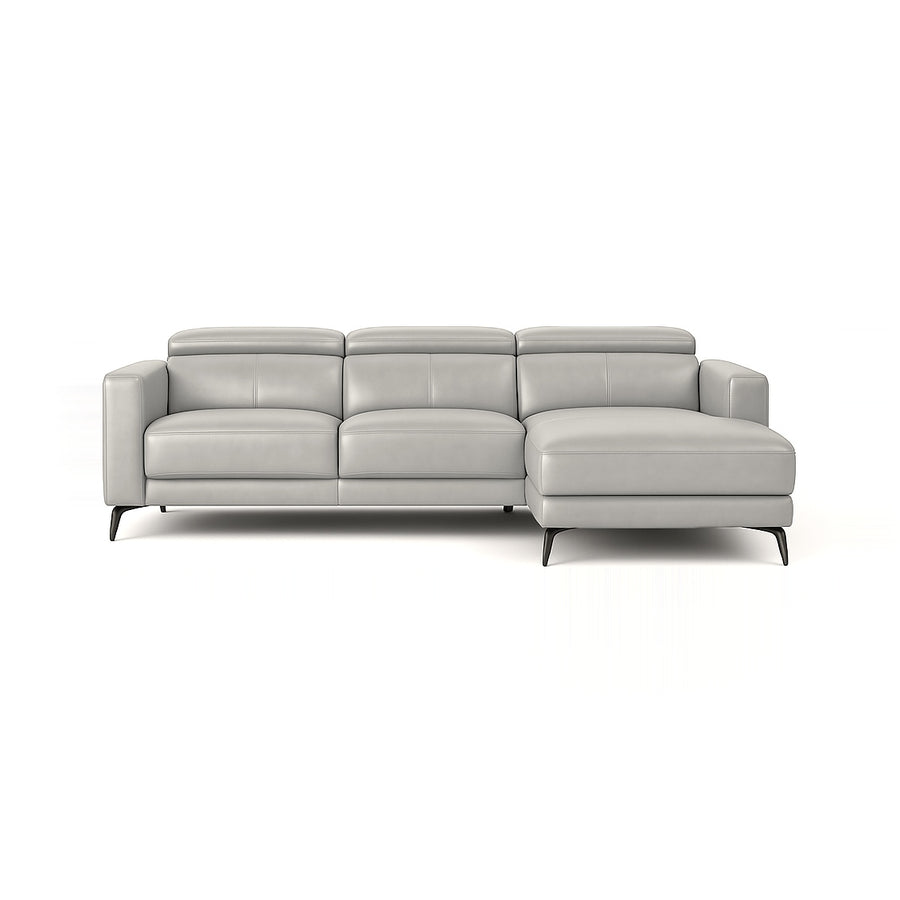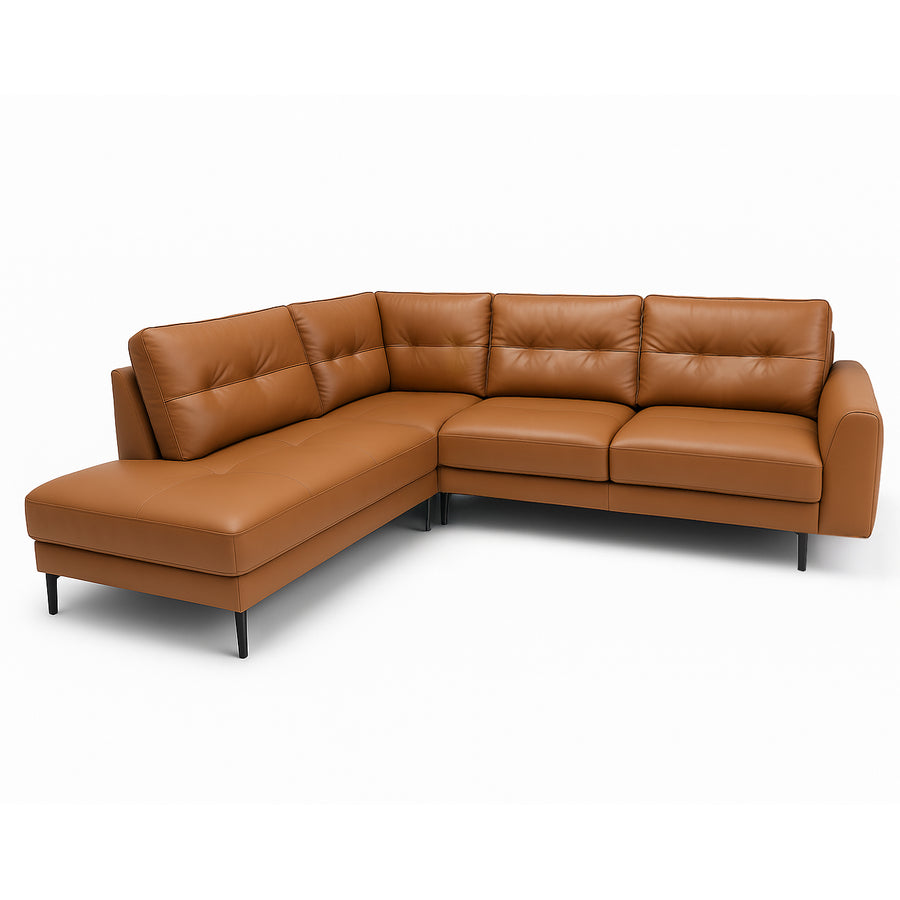The Truth About Leather Wrinkles: Beauty Marks, Not Blemishes
Upon acquiring new leather furniture, particularly pieces designed for comfort and everyday use, some customers may observe the appearance of wrinkles on the material. Initial reactions might involve concern about the quality or longevity of the investment. However, it is important to understand that this phenomenon is not only common but often a hallmark of genuine leather. This blog post aims to demystify the occurrence of wrinkles in leather furniture, explaining the underlying reasons for their formation and reassuring you that, in most cases, these are natural characteristics that enhance the beauty and authenticity of your cherished pieces.
The Essence of Genuine Leather: A Natural Material with Character
Genuine leather, unlike synthetic alternatives, originates from animal hides and skins. This natural origin imbues it with inherent characteristics that make each piece unique. Just as human skin possesses pores, scars, and variations in texture, so too does leather. These are not flaws but rather distinctive markings that contribute to the individual charm and authenticity of the material. In fact, the presence of such "imperfections" often serves as a key indicator of genuine leather.
The furniture available at Home Quarters reflects a commitment to quality and often features natural materials. Within the realm of leather, various grades exist, including full-grain, top-grain, and genuine leather. While each grade offers different qualities and appearances, even high-grade leathers like full-grain and top-grain, which are derived from the outermost layers of the hide, will exhibit natural markings. These markings can include branding marks, veins, scratches, scars, and, importantly, wrinkles. Even "genuine leather," though sometimes considered a lower grade compared to top and full grain, is still real leather and possesses its own set of natural characteristics.
The presence of "fat wrinkles," for instance, which are formed by fat deposits in the animal's hide, is a telltale sign of genuine leather. Therefore, understanding leather as a natural material is crucial in appreciating its inherent beauty and moving away from the expectation of a flawlessly uniform appearance typically associated with synthetic materials.
The Science Behind the Wrinkle: Why Genuine Leather Develops Character
The development of wrinkles in genuine leather furniture is a natural process influenced by several factors. One primary reason is the inherent elasticity of the material. Over time, with regular use, leather tends to stretch and loosen, particularly in areas that bear weight or experience frequent contact, such as seating surfaces and armrests. This natural stretching leads to the formation of creases and folds, often affectionately referred to as "comfort wrinkles". These wrinkles are a normal part of how upholstery matures and are commonly observed in furniture designed for soft seating.
Environmental factors also play a significant role in the appearance of leather. Leather is sensitive to extreme temperatures and can lose its natural moisture content when exposed to direct sunlight or heat sources like radiators. This drying effect can cause the leather to shrink and become less flexible, ultimately leading to the formation of wrinkles. Similarly, fluctuations in humidity levels can impact leather; high humidity may cause the leather to absorb moisture, while low humidity can exacerbate dryness and stiffness, both contributing to wrinkling.
The way we use our furniture also contributes to the development of wrinkles. Placing heavy objects on leather surfaces or consistently using specific areas can cause the leather to stretch and sag, resulting in visible wrinkles. This is analogous to how leather shoes develop creases at the points where they flex with each step. The design and construction of the furniture itself can also influence the appearance of wrinkles. For instance, furniture with larger and softer cushions tends to exhibit more wrinkling, sometimes referred to as "puddling," due to the greater movement and compression of the leather. Ultimately, the various factors at play highlight that wrinkles are often an unavoidable and natural consequence of owning and enjoying genuine leather furniture.
Wrinkles: A Mark of Authenticity and Quality, Not a Sign of Decline
It is important to reiterate that the presence of wrinkles, especially the "comfort wrinkles" that develop with use, is generally not an indication of poor leather quality. In fact, even high-quality leathers, including premium options like French calfskin, are susceptible to creasing. A key distinction to make is between the soft, gradual creases that develop naturally in good quality leather and the sharp, cracking lines that might appear on lower-quality "corrected" leather, which often features a synthetic coating. These sharp crinkles can indeed be a sign of the plastic coating cracking, indicating inferior quality.
Interestingly, the absence of wrinkles in leather could even suggest that the material is not genuine or has undergone extensive processing to achieve an artificially smooth appearance. Leather that does not crease at all might be a red flag, suggesting it is either a synthetic imitation or a heavily corrected, and often cheaper, leather that has been refinished to mask its natural characteristics. In the realm of fine leather goods, natural creases are often appreciated as part of the leather's unique character and inherent beauty. Therefore, rather than viewing wrinkles as a sign of decline, they should often be seen as a mark of authenticity and the natural evolution of a high-quality material.
Decoding the Creases: Types of Wrinkles You Might Encounter
To further understand the nuances of leather wrinkles, it can be helpful to recognize some common types you might encounter on your furniture:
- Comfort Wrinkles: These are fine lines and gentle folds that emerge over time in areas of the furniture that experience regular use, such as the seating areas and where arms frequently rest. They are a testament to the furniture being enjoyed and becoming more comfortable with time.
- Puddling: This refers to the initial compression and subsequent wrinkling of cushions that occurs immediately upon sitting. It is particularly noticeable on larger, softer cushions and is a normal characteristic of their design.
- Creases from Folding: These are more defined lines that can appear in areas of the leather that experience frequent bending or folding, such as along the edges of cushions or where different panels of leather meet. The thickness of the leather can sometimes influence the prominence of these creases.
- Loose Grain Wrinkles: In some instances, more pronounced wrinkles might occur if the top layer of the leather (the grain) is not tightly bonded to the underlying layers. While this can sometimes be associated with lower-quality leather, it can still occur in genuine leather, particularly in areas of the hide that are naturally looser, such as the belly.
- Spider Web-like Cracking: These are small, interconnected cracks that can appear on the surface of the leather. This type of "wrinkle" may indicate a dense, often synthetic, coating on lower-quality leather that is beginning to break down.
Understanding these different types of wrinkles and their likely causes can help you better interpret the natural changes occurring in your leather furniture.
Embracing the Journey: Caring for Your Leather Furniture and Its Evolving Character
While some wrinkling is an inherent part of genuine leather, proper care can help maintain its overall health and appearance and minimize unwanted wrinkles caused by neglect. Regular cleaning and conditioning are essential to keep the leather moisturized and supple. Conditioning helps replenish the natural oils in the leather, preventing it from drying out and becoming brittle, which can exacerbate wrinkling and lead to cracking. It is also advisable to avoid exposing your leather furniture to direct sunlight or heat sources, as these can accelerate the drying process and contribute to wrinkles. Using protective covers or pads can help minimize stretching and potential wrinkling caused by the weight of heavy objects. Promptly addressing any spills or stains will also help maintain the leather's integrity.
By taking these care steps, you can ensure the longevity and beauty of your leather furniture. It is important to remember that some wrinkling is a natural part of the leather's aging process and should be embraced as a sign of its authenticity and the unique character it develops over time.
Home Quarters: Curating Quality Leather for Your Vancouver Home
At Home Quarters, we are committed to providing our Vancouver customers with high-quality furniture, including pieces crafted from beautiful and durable leather. The leather we source is chosen for its inherent beauty, longevity, and natural characteristics. We understand that genuine leather will evolve over time, potentially developing a rich patina and natural wrinkles that tell the story of its use and add to its unique charm. We believe that these natural markings are part of what makes leather furniture so special and enduring.
Conclusion: Appreciating the Unique Story Your Leather Furniture Tells
In conclusion, the appearance of wrinkles on your genuine leather furniture is typically a natural and often desirable characteristic of the material. These "beauty marks," rather than being blemishes, are often a sign of authenticity and the unique journey your furniture undertakes as it becomes a part of your home. By understanding the science behind leather wrinkles and appreciating them as a mark of quality and natural evolution, you can enjoy the comfort and character of your leather furniture from Home Quarters for years to come.

